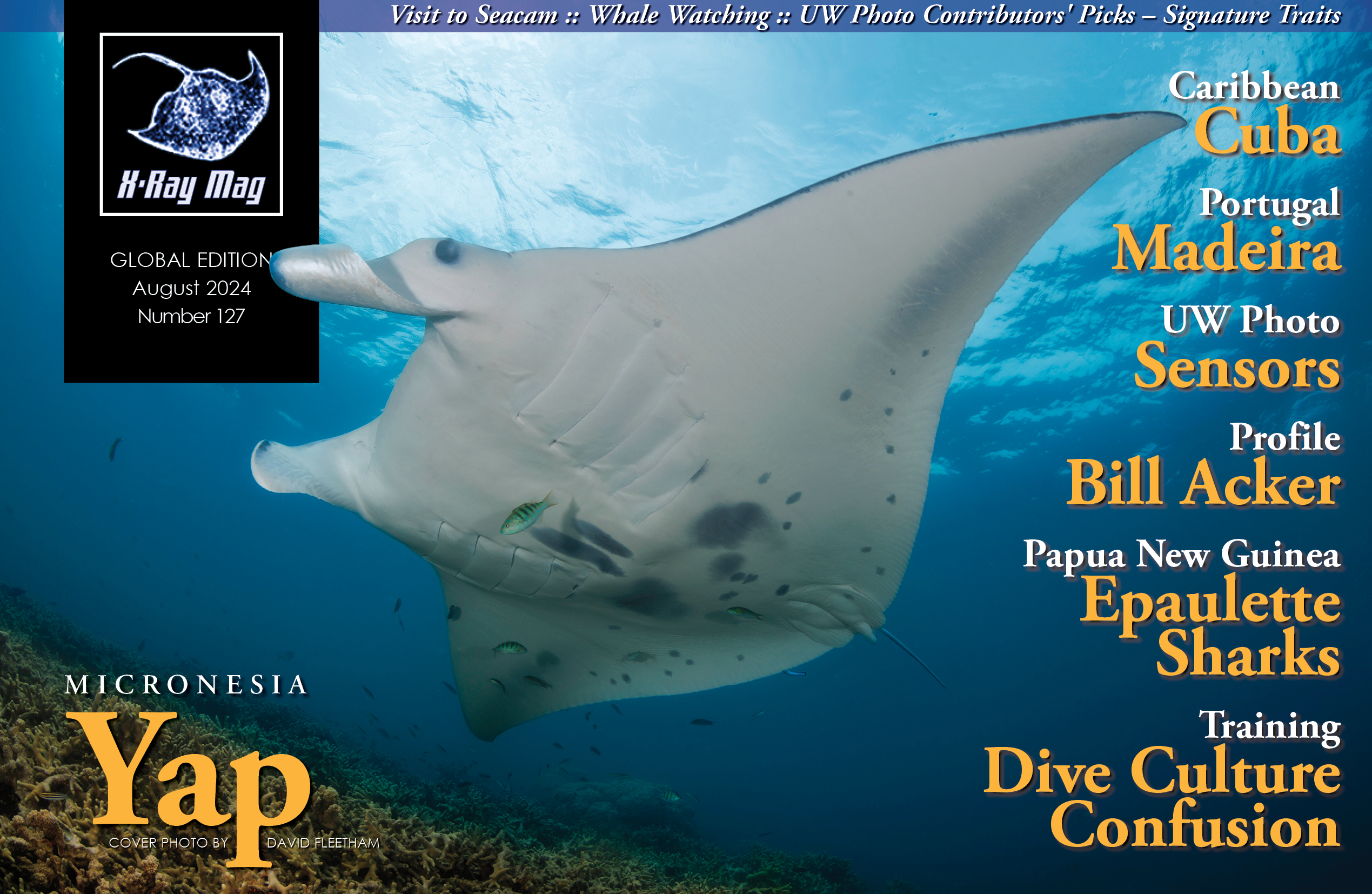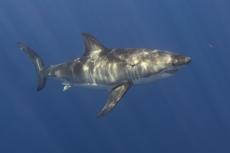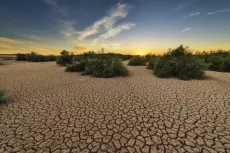There are wonders to discover and explore in Cuba’s natural world, both above and below the surface of the sea, from endemic species of marine life to exotic birds and animals in the national parks. Pierre Constant shares his journey there.
Contributed by
At the confluence of the Gulf of Mexico and the Atlantic Ocean, Cuba is an archipelago of 4,195 islands in the northern Caribbean Sea. It is located south of the Tropic of Cancer, between latitudes 19°N and 24°N and longitudes 74°W and 85°W. Key West lies 150km across the Strait of Florida to the northwest, the Bahamas 22km to the north, Haiti 77km to the east, and Jamaica 140km to the south. Mexico is 210km to the west across the Yucatán Channel.
The largest island in the Caribbean, with a land surface of 109,884 km sq, Cuba is 1,250km long. It is mainly flat with some rolling plains and its highest point is Pico Turquino (1974mi) in the Sierra Maestra mountain range in the southeast. Cuba’s second largest island is Isla de la Juventud (2,204 km sq) in the Canarreos Archipelago, off Cuba’s southwestern coast. The population of 11.3 million people (2022) is composed of several ethnic groups, including White (64%), Mulatto (26.6%) and Black (9.3%). The main languages are Spanish, Haitian Creole and English.
The Caribbean Current brings warm water from the equator. Cuba has a tropical climate, with the northeast trade winds blowing most of the year. The dry season extends from November to April, and the rainy season extends from May to October. Average temperatures are 21°C in January and 27°C in July.

Geological features
Geologically speaking, Cuba records three important episodes: the Jurassic breakup of North and South America (Pangea) 135 million years ago; the sedimentary-magmatic and metamorphic evolution of an intra-oceanic Cretaceous-Paleogene ophiolite arc-complex; and the Paleogene “soft collision” of the NW Caribbean Plate (45 million years ago) with the North American Plate (NOAM).
A Greater Antilles subduction zone of the NOAM under the NW Caribbean Plate (in a southwest direction) occurred from 120 million years ago to late Cretaceous (65 million years ago). Western and central Cuba is an orogenic belt (i.e., a mountain range by uplift) created by the collision during the Cretaceous of an island arc with the Florida-Bahamas Platform. Jurassic and Cretaceous limestone appear conspicuously in the western part of Cuba, in the Pinar del Rio region of Vinales, as massive ranges and outcrops locally known as “mogotes”. Rocks scraped off the Caribbean Plate have accumulated on the North American Plate.
Cuba is, therefore, affected by active fault systems, which are responsible for several earthquakes each year. Over the past centuries, major quakes with a magnitude of 7.0 or above have been highly destructive. The last one was in January 2020.

Getting there
After arriving at the airport, I took the Viazul Yutong bus, which made a beeline from La Havana to Pinar del Rio, in three hours. From there, it was a 45-minute ride on a winding road up into the hills to Vinales. Nestled in a very lush and green countryside with mountainous scenery, the little town was a highlight on any tourist map. There, I had hired a car for the continuation of my journey to the far west of Cuba, a place known as Maria La Gorda. In the afternoon, I showed up at the car hire agency to confirm that everything was set for me to pick up the vehicle first thing in the morning the next day.
“We cannot make the contract on the computer now because we have no electricity. It is on for three hours and off for nine hours. Come back before 6 p.m.,” said a none-too-friendly man with a rough, low-pitched voice. “Bienvenidos a Cuba. Viva la Revolucion!” I thought. When the electricity was back, it took over an hour to make the contract with the gruff man behind the counter. I came out in a high state of agitation. The Hyundai Grand i10 car, for which I had paid a high price, was dented and scratched on all sides. Not an auspicious sign.
In the early morning, I was off to my final destination. After three and a half hours on a potholed road in terrible condition, I reached Maria La Gorda, which was an exclusive, government-owned hotel in a so-called paradise setting on the Bay of Corrientes. It faced the Strait of Yucatán to the west, with the Caribbean Sea to the south. A white sandy beach under a line of coconut trees fringed turquoise blue waters. The sun was high. Virtually, not a soul around.
Upstairs from an old cement building painted yellow, the room was alright. I made myself at home after paying a visit to the laid-back dive centre next to the beach bar and restaurant. After noisy and hectic La Habana, this felt like relaxation at last.
Two big steel-hulled dive boats were moored at the jetty. The dive operation looked well-seasoned, with brand-new aluminium tanks. Cuban cigar in hand, Rafael, the dive manager, had the cool face of a Richard Gere.

Prehistory to present day
As history would have it, humans from northeastern South America are thought to have settled in Cuba 6,000 years ago. They caused the extinction of the native fauna, such as the endemic sloth. Around 1,700 years ago, the Arawakan-speaking ancestors of the Taino came to the island. The Taino produced pottery and practised agriculture. Pushed westward by the Arawak, descendants of the first settlers roamed around the western part of Cuba. Recorded as the Guanahatabey people, these were hunter-gatherers. The Taino cultivated yuca (also known as cassava), cotton and tobacco.
In his search for a route to India, Christopher Columbus explored Cuba’s northeastern coast in 1492 and passed along the southern coast on his second voyage in 1494. Cuba was fully mapped by Sebastián de Ocampo in 1508. After they defeated the fierce Taino guerilla warriors, the island fell to the Spanish in 1514, and a settlement on the southern coast was founded. Priest Bartolomé de las Casas observed various massacres of local populations, which were butchered by the invaders despite a friendly approach by the Indigenous people.

Conquistadors sought slaves from surrounding islands and the continental mainland. In 1519, Hernan Cortès launched his Spanish conquest of the Aztec Empire from Santiago de Cuba via Yucatán. After 1550, the natives were largely decimated by diseases such as measles and smallpox. Invaders were taught how to raise tobacco and consume it as cigars. Soon, Spanish colonists mixed with the indigenous population, sharing DNA. The Spaniards established sugar and tobacco plantations and imported black slaves from Africa to work on them. Colonial Cuba was a frequent target of buccaneers, pirates and French corsairs.
In 1741, the British launched an invasion to capture Guantanamo Bay. Later, they had La Habana under siege in 1762, captured the town, and took control of the western part of Cuba, opening trade with North American and Caribbean colonies. The Seven Years’ War with Spain ended up with a treaty, the “Peace of Paris”, which gave Florida to the British in exchange for Cuba. The Spanish governor of Louisiana reconquered Florida in 1781. The Slave Trade Act of 1807 abolished the slave trade in the British Empire. Spain followed suit in 1820, but Cuba continued with slavery throughout the 19th century. The late 19th-century boom in Cuba’s sugar industry improved the transportation infrastructure, with new roads and railways being built. In 1860, the United States imported 82 percent of the sugar produced in Cuba.
Cuba’s early liberation movement occurred after the success of the French Revolution and the revolt of the black slaves in Haiti in 1791. Following its Declaration of Independence in October 1868, the War of Independence in February 1895, a handing over to the United States in December 1898, and a final independence from the United States in 1902, the Republic of Cuba was born.
The Cuban Revolution took place between 1953 and 1959, 170 years after the French Revolution. Socialist Marxist Fidel Castro, with Che Guevara, opened a new chapter in Cuba’s history, declaring in April 1959: “Patria o Muerte, venceremos” and Che Guevara, upon his departure for Bolivia, concluded: “Hasta la victoria siempre. Viva la Revolucion!”

Diving
On my first day of diving, the sun was out, the sky was blue, and the bay was like a calm lake with hardly any breeze. A group of 12 American students working in conservation and their university professor joined me on the boat. Without much diving experience, it took them a long time to get ready and get through a “refresher” briefing.
Paraíso Perdido. This dive site was a 25-minute boat ride towards Cabo (Cape) Corrientes, following the coastline of uplifted coral limestone. The water was rather warm at 27°C, so I did not need a shorty.
Visibility underwater was excellent. The offshore reef was surrounded by white sand. The bottom was full of gorgonians (rather brownish in colour) interspersed with pink vase sponges, golden yellow tube sponges, and a few barrel sponges.
Marine life was vibrant. Schools of fish included bluestriped grunt (Haemulon sciurus) and French grunt (Haemulon flavolineatum) with yellow diagonal stripes. There were Creole wrasse (Clepticus parrae), a typical Caribbean species sporting a mix of blue, black, purple, yellow and white. The small but attractive bluehead wrasse (Thalassoma bifasciatum) was very active. Marvels included the Spanish hogfish (Bodianus rufus), with a purplish-pink top half and a yellow belly. Dorsally black with white diamond shapes and a flashy red belly, the female stoplight parrotfish (Sparisoma viride) was a stunner. Purple common sea fans (Gorgonia ventalina) abounded. A little school of silvery bar jacks (Caranx ruber) with a black stripe on the rear and another one on the lower caudal fin flashed by me.

Acuario. This dive site was a real aquarium, full of life, with a depth of 8m. The smooth trunkfish here (Lactophrys triqueter) was exquisite, and so was the elusive French angelfish (Pomacanthus paru). There was also the charming four-eyed butterflyfish (Chaetodon capistratus) with a black spot on the rear end, and the blue tang (Acanthurus coeruleus) was rather common.
Almirante. Here, the offshore fringing reef was preceded by a white sandy bottom. I glided over a prairie of garden eels before reaching the drop-off, plummeting into the deep. Orange, purplish-red, or brown filamentous sponges were numerous. Bushes of copper brown to black coral were of good size. A lone great barracuda and a crevalle jack (Caranx hippos) cruised by into the blue. At 34m, an attractive porkfish (Anisotremus virginicus) with yellow horizontal stripes and double black stripes on a bluish-white face left me breathless. I marvelled at a queen angelfish (Holacanthus ciliaris) with its blue and yellow face and waves of yellow-edged scales on its sides. Creole wrasse swimming in formation, streamed by. They were dark blue in the body and black at the head. Bermuda chubs (Kyphosus sectatrix) and white grunts (Haemulon plumieri) observed us divers with curiosity.

Patio de Vanessa was a shallow dive. I landed on a sea fan that hosted two lovely flamingo tongue snails (Cyphoma gibbosum), which were yellowish-orange with angular shapes along the dorsal ridge. The banded butterflyfish (Chaetodon striatus) here reminded me of one I saw in the Galapagos. The grey angelfish (Pomacanthus arcuatus) looked like a prince.
A short distance from Maria La Gorda, an old cement pier hosted a collection of royal terns (Thalasseus maxima) basking in the sun. The beach extended south towards Cabo Corrientes, ending on coral rubble. I entered a forest of Florida thatch palms (Thrinax radiata), locally known as guano de costa. Turkey vultures (Cathartes aura), which were black with a red head, flew back and forth above the coastline. A trail into the palm forest followed the edge of a saltwater lagoon inhabited by caimans. “They are not aggressive!” I was told.

Cabezo de Ludo. Close to Cabo Corrientes, this wall dive was where I encountered a spotted spiny lobster of significant size and a large tiger grouper (Mycteroperca tigris). There was also a rock beauty angelfish (Holacanthus tricolor) with a golden yellow head and black body. An eagle ray flew by, and I was pleasantly surprised by a lettuce sea slug (Elysia crispata), which was cream-white in colour.
Back on land and rather bored with the food at Maria La Gorda, which had a poor selection, hardly any vegetables and frozen fish for days, I felt the need to drive to a nearby village. The only hiccup was that the car would not start. A passing mechanic found out that the gasoline pump was not working and the battery was flat. I had to call the car rental company in Pinar del Rio for replacement parts, and the assistance truck did not show up until well after dark. But more diving was ahead…

Cadena Misteriosa was another wall dive bordering an inner lagoon. I saw a diamond stingray take off from the sand with a fish on top of it. The yellow-headed wrasse (Halichoeres garnoti) caught my attention, and so did the redband parrotfish (Scarisoma aurofrenatum). Upon returning over the top of the reef, we faced a strong current from the south. It was tough going and got us pumping air wildly!
Ancla de François was a shallow and quiet dive site. Rafael, the dive leader, drew attention to a tame juvenile lionfish, then pointed out an awesome juvenile spotted drum (Equetus punctatus), which was black and white with an exquisite crescent shape.
Topside foray
As my vehicle was alive again, I finally made it to the village of La Bajada for lunch. Maité’s “casa particular” (a private homestay similar to a bed and breakfast – ed.) agreed to prepare a fish dish for me. “You have to wait one hour and 30 minutes,” they warned and suggested a dip while I waited. “Follow the track along the seashore to ‘Poza de Agua Dulce’.” It was a freshwater sinkhole, located on the seashore in Guanahacabibes National Park—a perfect place for a swim. Back at Maité’s place, a royal meal awaited: snapper with rice, black beans, vegetables and papaya for dessert!

Cabo San Antonio
Done with my diving at Maria la Gorda, I chose to head to Cabo San Antonio the next day. The western point of Cuba was a 75km drive into the wilderness of Guanahacabibes National Park. Near the visitor’s centre at La Bajada, I suddenly came across a migration of red crabs on the road.
“Do you have a spare tyre?” inquired the guide.
“Well, yes… why do you ask?” I replied.
“There is a 50 percent chance that you will have a punctured tyre from one of the crab’s claws,” said the guide.

It was raining, and so I did not like the idea of getting into trouble. I postponed the trip and instead had a walk in the forest with a local ranger. The endemic birds here were fascinating, including the bee hummingbird (Mellisuga helenae), also known as zunzuncito; the Cuban emerald (Riccordia ricordii), a hummingbird with dark green plumage; the loggerhead kingbird (Tyrannus caudifasciatus); and the Cuban pewee (Contopus caribaeus). In a shallow cave underground, a Cuban boa (Epicrates angulifer), known locally as “Majá de Santa Maria”, was on the hunt for bats.
I went back to Guanahacabibes National Park the next day. Wild pigs roamed along the roadside, but there were also Desmarest’s hutia (Capromys pilorides), a fat brown rodent with a face resembling that of a capibara, and white-tailed deer (Odocoileus virginianus). I spotted an endemic Cuban iguana (Cyclura nubila nubile) basking in the sun on a branch. Caimans floated lazily like wooden logs on the surface of the lagoon.
Cabo Corrientes and Cabo San Antonio were once refuges for British, Dutch and French pirates in the 16th and 17th centuries, including famous British privateers and commanders such as William Dampier, Francis Drake, Henry Morgan, Thomas Baskerville and Thomas Maynard; Dutch privateers Roc el Brasiliano, Alex Oliver Esquemeling, Vaude Vin, Piet Pieterszoon and Lorenzo de Graaf; and French privateers Francis el Olonès, François Leclerc, Roberto Baal and Jacques de Sores. Opposing the rule of Spain and the commercial monopoly of the port of Sevilla, piracy and contraband from corsairs and pirates were the norm back in the day. Several shipwrecks have been found in the area.
On to Vinales and Playa Giron
I returned the car, fearing I would run out of fuel before Pinar del Rio. A few days in Vinales proved great for walks in nature, visiting a tobacco plantation, and tasting a unique rum made of tiny guayaba fruits. Limestone caves included the thrilling Cueva de Palmarito, which was an underground river and lake.
Playa Giron, located on the southern coast, was part two of my trip. A couple of Viazul bus trips via La Habana were needed to get to the destination. Here, a private “casa particular” ran a dive centre from home. Julio, the owner and a bona fide diver, had a long-standing reputation. Personal service at this point in the trip would be more appropriate than a commercial operation. The 67-year-old Juan Carlos, Julio’s assistant, showed up in his vintage matte silver car, pulling a homemade trailer. “A Russian Volga, model 1989, the best car in the world!” he boasted. The 35-year-old car had done its time, but Juan was proud of it. “It runs great with a new Hyundai engine!”

Punta Perdiz. We reached Punta Perdiz some kilometres away, zigzagging between swarms of red land crabs (Gecarcinus ruricola). Also known as zombie crabs, four colour morphs distinguish the species: black, red, yellow and green. The crabs head out towards the sea to spawn. Sadly, many are crushed, ending up as a free meal for the turkey vultures. The eggs of zombie crabs hatch in the sea, where the larvae live as plankton and return to land as megalopa (post-larvae).
Playa Giron. In Playa Giron, diving is shore-based. Divers get ready on the uplifted limestone shelf, jump into the sea, and swim 100m to 150m out over the sandy shallows. Sea surface conditions are usually perfect, but it can be rough if the wind blows.
Dressed in his 7mm wetsuit, Julio took me straight to the drop-off. I wore only a pair of shorts because the temperature was a balmy 27° to 28°C. The visibility was good, and the slope was full of purple, blue and red filamentous sponges, orange sponges, vase sponges, and the classic yellow tube sponges. There was little fish life, however. “People have to live, you see,” I was told. We passed by a sunken fishing boat, upturned, where two big Santoyo crabs (Mithrax spinosissimus) with impressive claws hid. A grey angelfish cruised by as I sank to a depth of 27m, and a large cubera snapper (Lutjanus cyanopterus) was inquisitive. A spiny lobster was on the lookout at the entrance of a hole. A blue and white spotted cleaner shrimp with long claws (Periclimenes yucatanicus) danced in its anemone.
Depending on the weather, Julio took me to dive sites with canyons and swim-throughs at depth. It was an opportunity to explore a family of fishes that was new to me. The Hypoplectrus genus has no less than 18 species. Related to groupers (Serranidae), these “hamlets” are small in size and have a distribution from the Bahamas to Yucatán. I got shots of the indigo hamlet (Hypoplectrus indigo); the shy hamlet (Hypoplectrus guttavarius), which was yellow-headed with a brownish-black body; the golden hamlet (Hypoplectrus gummigutta), which was all yellow with a blueish-black mask; and the barred hamlet (Hypoplectrus puella), which had greyish-brown stripes. The butter hamlet (Hypoplectrus unicolor) was cream-white in colour.

Cueva de los Peces is a so-called cave dive. Hardly 100m from the seashore, this waterhole has freshwater above and saltwater below. A tectonic fault running along the coast connects different cenotes. Plummeting to a depth of 70m, this dark abyss between straight walls had no appeal for me as someone who has enjoyed the magnificent cave diving in Yucatán.

More rewarding was a stroll in the forest with experienced birdwatcher Leoncio. It allowed one to see the endemic Cuban pygmy owl (Glaucidium siju), the magnificent Cuban trogon or tocororo(Priotelus temnurus), the national bird of Cuba, and the ravishing Cuban tody or cartacuba (Todus multicolor), which was apple green, white and red. In a cave full of Jamaican fruit bats (Artibeus jamaicensis), a Cuban boa was stalking in the darkness.
Cuba’s natural world is full of unexpected wonders, one just needs a little bit of time and dedication to discover them.
Towards the end of my trip, I was at the Cienfuegos bus station, waiting for the Viazul bus to Trinidad. The hall was crowded with noisy people talking loudly on their cell phones. Some people were even shouting in the background. A local bus had been cancelled, so passengers were gathering angrily around a man in charge. A telephone was ringing relentlessly in a deserted office. It all sounded like a madhouse. A compassionate Cuban suddenly leaned towards me and whispered, “Sorry, Señor. This is Cuba… it’s complicated.” ■
Sources:
Iturralde-Vinent MA, García-Casco A, Rojas-Agramonte Y, Proenza JA, Murphy JB, Stern RJ. 2016. The geology of Cuba: A brief overview and synthesis. GSA Today. 26(10).
Wikipedia.org








































